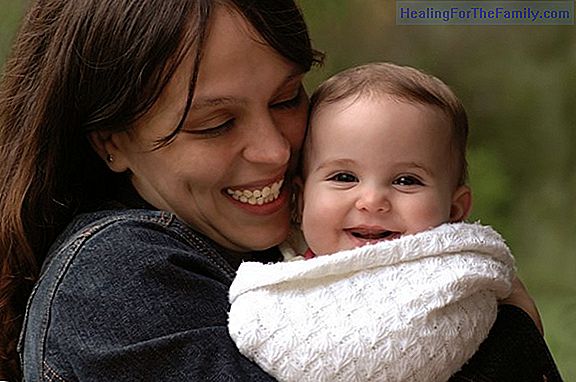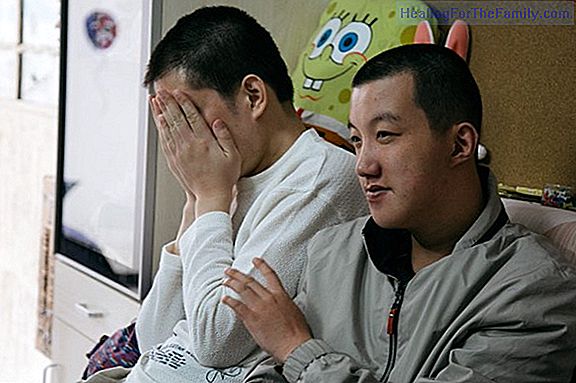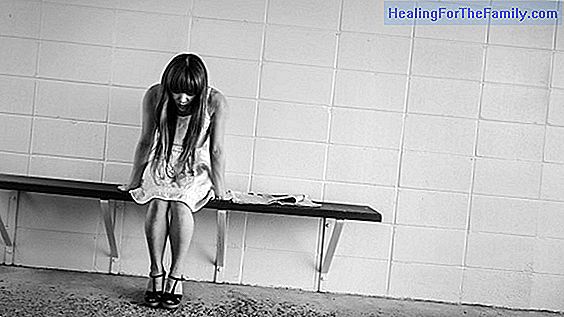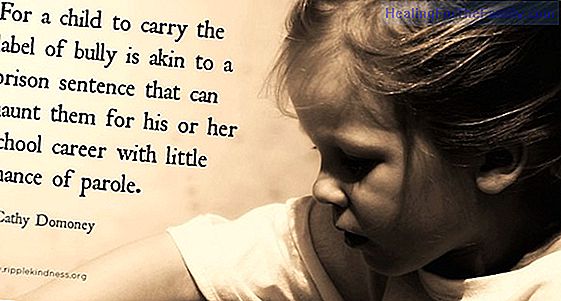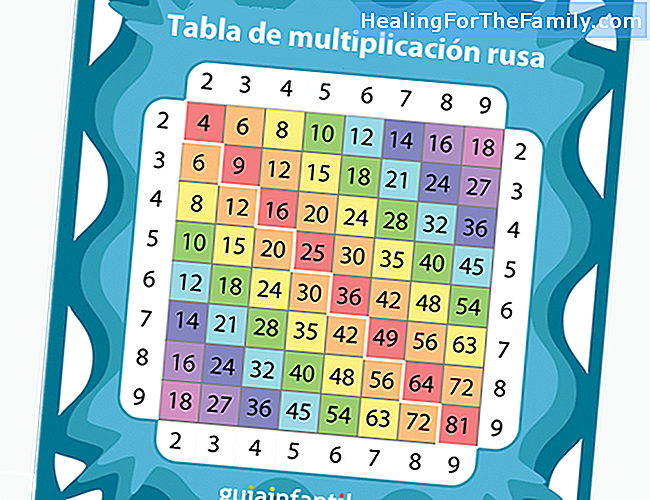Learning materials for babies in the pool
For babies to learn to stay afloat in the water and master the aquatic environment, it is advisable to use different elements or learning materials. Each one is specific to each stage of learning, they must be organized and they are evolutionary. Cruz Lobo Sanz, monitor of the Baby Swim pool in Madr
For babies to learn to stay afloat in the water and master the aquatic environment, it is advisable to use different elements or learning materials. Each one is specific to each stage of learning, they must be organized and they are evolutionary. Cruz Lobo Sanz, monitor of the Baby Swim pool in Madrid, recommends which materials are most suitable to stimulate babies during their first contact with water.
With dad and mom at the pool
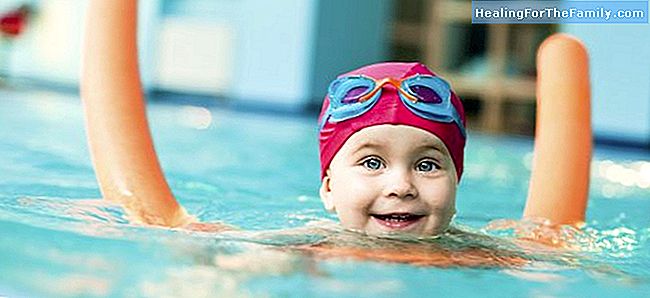
When the holidays arrive and the family moves to the beach or goes to the pool, doubts arise about the material that the baby should use in the water. Cruz Lobo recommends that parents "use the same material that the baby is working with at the moment, that is, if they are doing exercises with a churrito with their connector, we recommend that they continue with this, since it is not good to upload or lower level, each stage of learning has its time and you have to respect it ".
Learning materials for babies in the pool
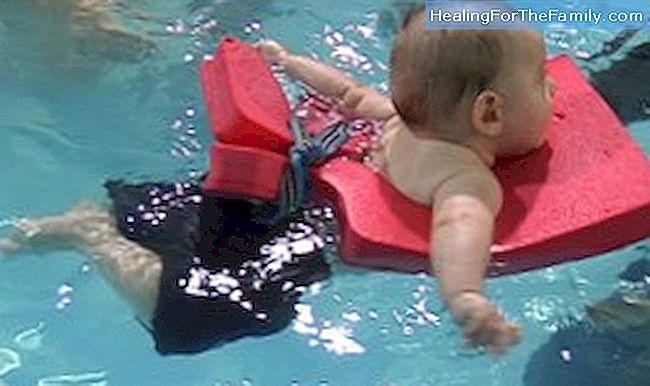
1. Cork table. Designed and designed for babies under one year of age in their first contact with water. It is ideal for a baby of about five months, which is the minimum age with which you can start working with babies in the aquatic environment. This cork board has a very large base and an adjustable hole through which the baby is introduced. Its goal is to familiarize the baby with water while balancing and offering safety while moving through the water. The use of the table requires constant monitoring by parents or the monitor because although it seems simple babies can turn around with this material. We must keep the baby on the table, releasing and holding him little by little, or giving him the little hand. The table is the initiation material for babies.
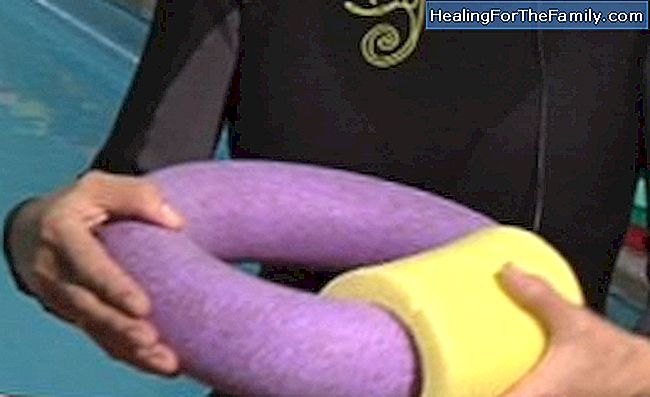
2. Churro. The use of the table gives way to the churro with its connector. The baby goes inside the churro with the connector centered in the front. With this material, the baby has more difficulty maintaining balance than with the tablet, because it has less base. The system is similar to a float and its function is to stimulate the baby to work balance and flotation. The mission of the parents or monitors is to hold and release the baby in an alternative way and, little by little, until the child acquires autonomy. Babies usually take a month or a month and a half to master the churro technique. However, it is normal that they do not get it at all because they always give a little back.
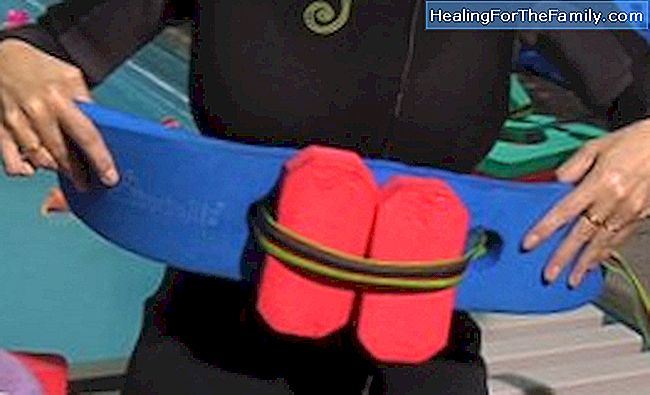
3. Whole belt. The whole belt fits the baby's body and is used, initially, with two tablitas or two corks to reinforce the stability and balance of the baby in the water.
This material serves to work autonomy and movement and, in addition, adds difficulty to the child's work in the pool, since with the belt it is more difficult for the babies to maintain their balance. Babies should try harder to stay and move.

The second step of learning in the water with the belt is to remove a cork board. The remaining table is usually placed horizontally to prevent being bitten. With this added difficulty the same games and activities are performed. Finally, this table is also removed and then we go to the entire belt without boards, which costs a little more. In this stage of learning in the water, the babies already enjoy autonomy and show a good balance.
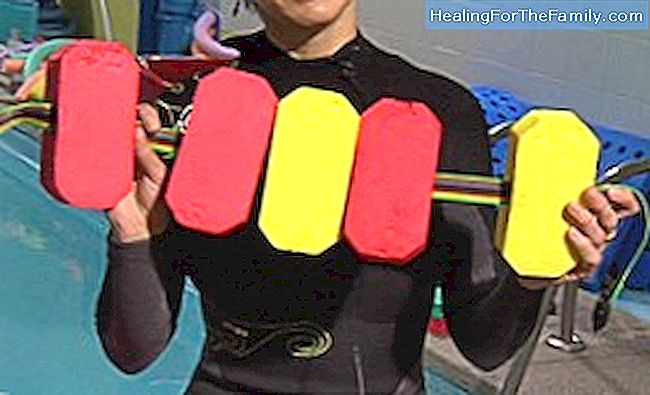
4. Belt of cork boards. From the whole belt, the baby goes to a belt of several cork tabl, which is placed around the waist. At the beginning, normally, three corks are placed on the back and two in front, and as it progresses and increases the skill of the baby, we are removing tablitas. The baby can stay with three fixed in the belt and, as an alternative, we can introduce cork inside the swimsuit, which can add up to five, distributing and balancing. This depends a little on the children, as there are some who have better balance and others who are going backwards, so more material should be put in front of them. If the baby goes forward, to correct the posture, we will put the material behind.
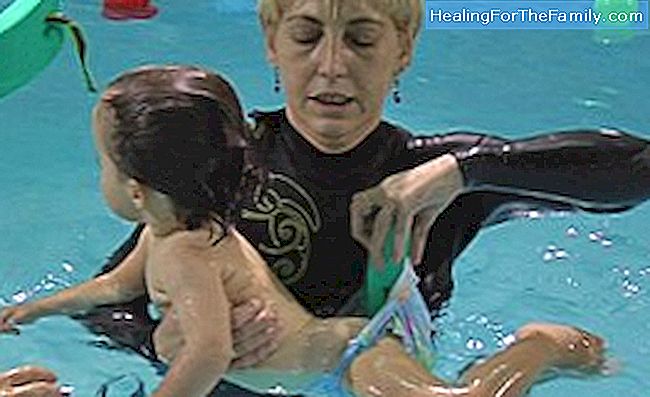
5. Corks in the swimsuit. The last and easiest step is to place the corks inside the swimsuit, to remove them little by little and one by one, as the baby progresses in his learning. While the baby is using all these materials, his posture in the water is upright. Only from the moment they carry two or three tablitas is when the child starts to go more horizontal and begins to acquire the horizontal swimming position that helps us to move in the water.
Marisol New

